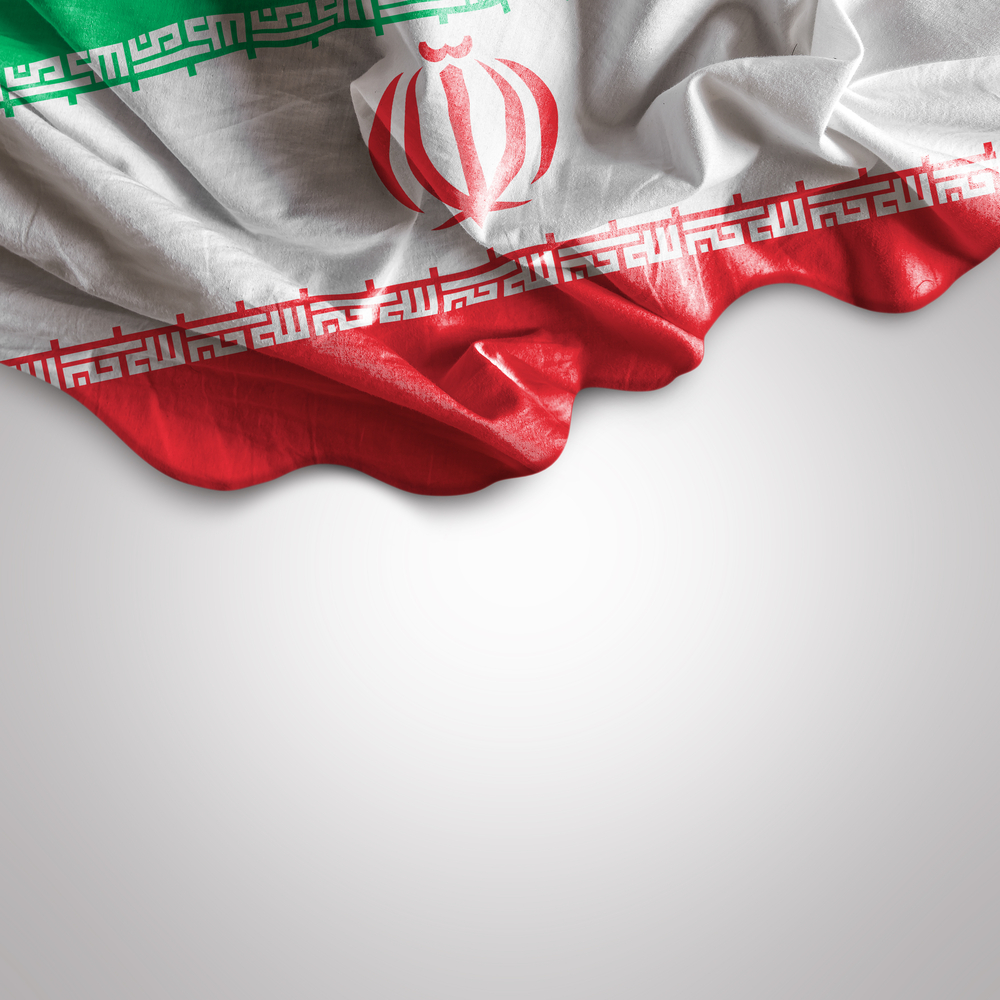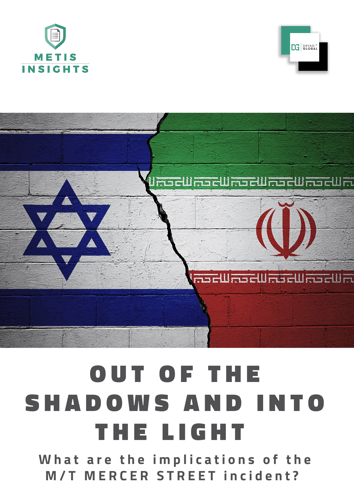
When discussing the risks posed by Iran’s asymmetric capabilities and proxy tactics at sea, observers have overlooked the possibility of Tehran employing a historical maritime strategy called the fleet-in-being.
Going back to the 17th century, the fleet-in-being strategy has allowed inferior navies to challenge stronger ones in oceans around the world.
Today, Iran’s reimagined fleet-in-being would not need a blue water navy or capital ships, but would rely on proxies in the eastern Mediterranean and Red Sea. These proxies could use a range of weapons — including armed unmanned aerial vehicles, unmanned surface vessels, anti-ship cruise missiles, ballistic missiles, naval mines, and fast attack craft — to harass, evade, and weaken the U.S. Navy. This reimagined fleet-in-being strategy could deny the U.S. Navy sea control of strategic waterways and further strain its already overstretched resources.
Given the risk posed by this potential Iranian strategy, U.S. Navy and Marine Corps planners should incorporate it into relevant wargames as well as contingency and operational planning for combatant commands. In addition to preparing to counter this threat in the Red Sea and eastern Mediterranean, naval planners should also be alert to its potential impact on operations in the western Pacific.
A History of the Fleet-in-Being
The fleet-in-being strategy is used by an inferior navy to deny a stronger navy command of the sea through harassment and evasion. It can take different forms, but generally involves an inferior navy avoiding direct engagement, while still actively providing strategic effects at sea, for example by attacking trade.
The term “fleet-in-being” was first used in 1690 by British admiral Lord Torrington to defend his strategy of avoiding a major battle with the French fleet to his critics in Parliament. Since then, fleet-in-being strategies have successfully been used by inferior navies. For example, the French Navy in the 18th century often refused decisive battle with the Royal Navy, preserving its power to harass sea lines of communication or wait until they had tactical advantages to engage. In World War I, the German High Seas Fleet used a fleet-in-being strategy after the Battle of Jutland to tie up the Royal Navy in the North Sea, thereby limiting the warships the British had to protect merchant shipping. Even the U.S. Navy initially used a fleet-in-being strategy during the early days of World War II. Adm. Chester Nimitz harassed the Japanese fleet and avoided a decisive engagement to preserve the U.S. Navy’s carriers and buy time to build up the U.S. Pacific Fleet.
Fleet-in-being strategies have also failed. Typically, this happens when the inferior fleet is trapped via blockade, prevented from engaging in harassment and interference, or forced into a decisive battle and destroyed. In “Retrospect Upon the War Between Japan and Russia,” Alfred Thayer Mahan provides, as an example of a failed fleet-in-being strategy, a detailed account of how the Imperial Japanese Navy trapped Russia’s Pacific Fleet in Port Arthur and destroyed it. However, this counter strategy will be more difficult against an Iranian proxy fleet-in-being. In the Iranian case there are no capital ships to blockade or trap and even seizing a Houthi or Hizballah-held port, as the Japanese Navy did at Port Arthur, would not prevent the use of unmanned aerial vehicles, naval mines, and anti-ship cruise missiles.
An Iranian Proxy Fleet-in-Being
For the past five years Iran and its proxies have been busy at sea. Iran’s proliferation of weapons to its proxies in Lebanon and Yemen have given it a “fleet-in-being” capability on the eastern Mediterranean and Red Sea. Recent Islamic Revolutionary Guards Corps and Houthi maritime operations have showed that Iran can attack commercial shipping hundreds of nautical miles from its ports and challenge major trade routes just as other fleets-in-being have done in the past. The Islamic Revolutionary Guards Corps has successfully employed limpet mines and one-way drones in the past five years against Saudi, Emirati, and Israeli tankers. In the Red Sea, Houthi unmanned surface vessels have been successfully employed against warships and commercial vessels since 2017. Many of the remote-controlled boats are converted from fishing vessels and can be easily hidden amongst other civilian vessels.
And the Houthi’s unmanned surface vessel capability is steadily improving. For example, Houthi unmanned surface vessels were able to attack Saudi tankers as far north as Yanbu, hundreds of nautical miles from Yemeni waters. These vessels have caused significant damage to Saudi ships and have temporarily shut down major ports, such as Jeddah. The Houthis have also successfully employed Iranian-supplied unmanned aerial vehicles, naval mines, and anti-ship cruise missiles against shipping and Saudi ports.
Although Lebanese Hizballah was not involved in the same level of maritime attacks over the past five years, it has demonstrated similar capabilities that threaten the eastern Mediterranean. It was also often involved in training the Houthis on Iranian weapon systems that can threaten maritime targets. Whether it is long-range drones with demonstrated ranges of 950 km, long-range ballistic missiles with ranges of 1200 km, anti-ship cruise missiles with ranges over 120 km, or unmanned surface vessels with ranges over 150 km, Iran can project power with its proxies from the eastern Mediterranean to the Indian Ocean.
In short, Iran has consistently demonstrated its ability to conduct complex multi-axis and multi-domain attacks against critical infrastructure and strategic waterways in the Middle East. These capabilities provide Iran with the means to disrupt trade, harass, evade, and wear down its adversaries — the essence of a fleet-in-being strategy. What’s more, a proxy fleet-in-being strategy would be consistent with and complement Iran’s existing asymmetric warfare doctrine, which emphasizes avoiding its adversaries’ conventional military advantages while exploiting their weaknesses.
Iran is also well positioned to overcome some of the historic challenges that have led some naval strategists to debate the effectiveness of a fleet-in-being strategy. Wayne Hughes saw the “growing vulnerability of ships in port” — due to advancements in aircraft and missiles — as possibly negating a fleet-in-being. Hughes also believed that an inactive navy that avoids engagement withers away over time, ultimately allowing its rival to gain command of the sea.
This, however, assumes a passive fleet-in-being, one that stays at port and relies on traditional capital ships. Iran’s reimagined fleet-in-being strategy would not stay in port or even need a port, would not use a traditional fleet, and thus would be less susceptible to U.S. Navy attacks. This fits with the concept of the fleet-in-being discussed by Geoffrey Till, which ranges from passive defense to moderated offense. Till sees a fleet-in-being in several forms, but each ultimately achieving strategic effects through harassing, evading, attacking trade, and draining the superior fleet’s strength. Iran’s proxies can use armed unmanned aerial vehicles, unmanned surface vessels, anti-ship cruise missiles, ballistic missiles, naval mines, and fast attack craft instead of capital ships to achieve the same effects that Till describes.
Implications
There are significant implications for the U.S. Navy and Marine Corps should Iran decide to implement a proxy fleet-in-being strategy. If a conflict with the United States were to arise, Iran could “activate” its eastern Mediterranean and Red Sea proxy fleets-in-being. These forces would likely avoid a major attack against U.S. warships, but wreak havoc on commercial shipping or U.S. Navy auxiliary ships. Most significantly, both the Suez Canal and Bab al-Mandeb Strait could be held at risk by these proxy fleets-in-being.
Crucially, should Iran implement a proxy fleet-in-being strategy it means that the U.S. Navy would have to expend its limited resources protecting shipping from the eastern Mediterranean to the Indian Ocean. The outbreak of a “Second Tanker War” could greatly undermine American security efforts in far more vital regions such as the western Pacific. This is the other purpose of a fleet-in-being strategy — drain the superior navy’s resources. The U.S. Navy already faces high operational tempos, crew shortages, and maintenance issues, which a fleet-in-being strategy could further exacerbate. Iranian proxy fleets-in-being in the eastern Mediterranean and Red Sea would also constrain the U.S. Navy’s freedom to act in more strategically important areas just as the German fleet did to the Royal Navy in WWI. Protecting a sea line of communication from the eastern Mediterranean to the Indian Ocean means that additional warships are not available to protect the Strait of Malacca or Luzon Strait.
It would not be implausible for Iran to activate its proxy fleets-in-being if the United States were involved in a conflict in the western Pacific — especially if Iran sees an opportunity to challenge American power on several fronts. This would not only affect the U.S. Navy’s freedom to act, but also its allies in East Asia. For example, nearly 95 percent of Japan’s oil comes from the Middle East and any disruption could seriously undercut America’s linchpin ally in the Pacific.
For the U.S. Marine Corps, an Iranian fleet-in-being strategy would seriously threaten its historic role in the region as the primary force used for non-combatant evacuation operations. The Marine Corps has on several occasions deployed to Lebanon for non-combatant evacuation operations and peacekeeping missions. As recently as 2006, Marine expeditionary units relied on the U.S. Navy’s sea control to land on Lebanese beaches near the U.S. embassy and evacuate Americans. Marine expeditionary units also have a history in Yemen, when the 24th Marine Expeditionary Unit evacuated U.S. embassy personnel, special operation forces, and Yemen’s president to ships in the Gulf of Aden. As recent maritime attacks have shown, both Lebanese Hizballah and the Houthis could seriously hamper the U.S. Navy’s sea control and therefore the Marine expeditionary unit’s ability to conduct such operations. This is in addition to their options for targeting U.S. forces once ashore.
In conclusion, although it does not have a “fleet” in the traditional sense, Iran could challenge the U.S. Navy’s sea control with a fleet-in-being strategy — using unconventional proxy fleets of armed unmanned surface vessels, fast attack craft, naval mines, drones, and anti-ship cruise missiles. A proxy fleet-in-being strategy would force the U.S. Navy to overstretch its resources to protect a long sea line of communication. The U.S. Marine Corps’ non-combatant evacuation operation mission, which relies on a permissive maritime environment, would also be put at risk.
The past five years should be a wake-up call to U.S. Navy and Marine Corps planners. Iran’s proxies have developed the requisite capability to challenge the U.S. Navy’s sea control in the eastern Mediterranean and Red Sea. Now, U.S. forces should begin preparing for a potential Iranian proxy fleet-in-being strategy. Planners should include red cells simulating Iranian proxy fleets-in-being during wargames for both regions. An Iranian proxy fleet-in-being should also be included during course of action development in contingency and operational planning for combatant commands. Planners should not only develop strategies to counter a proxy fleet-in-being strategy, but also be prepared for the impact it could have further afield, such as in the western Pacific. By taking these initial steps, the U.S. Navy and Marine Corps will avoid being surprised by a 330-year-old strategy.
Source: War On The Rocks
Related Posts
Iran’s Revolutionary Guard unveils unmanned..
Iran’s powerful Revolutionary Guard has added “smart submarines,” unmanned underwater vehicles, to..
US Navy reports ‘unsafe’ encounter with Iran’s..
The US Navy said Tuesday its forces had a tense encounter with Iran’s paramilitary Revolutionary..
Pentagon: No ‘Drop’ in Iran Threat to Ships, As..
More than a month after the Pentagon announced it was sending Air Force F-35s, thousands of U.S...





